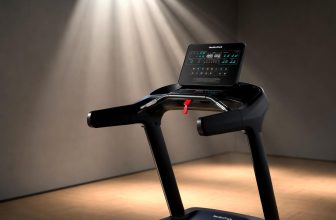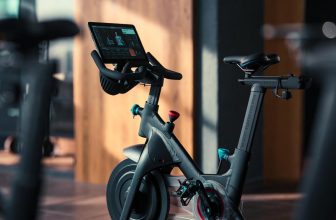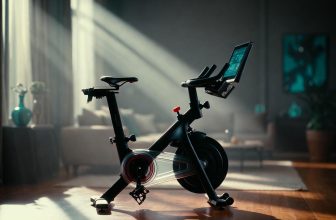Table of Contents
- Should Peloton Cleats Move?
- Understanding Peloton Cleats
- Proper Installation of Peloton Cleats
- Signs Your Peloton Cleats Are Moving
- Benefits of Secure, Non-Moving Cleats
- Troubleshooting Peloton Cleat Movement
- FAQ
- How often should I replace Peloton cleats?
- Can I use non-Peloton shoes with Delta cleats?
- Does cleat float cause knee pain?
- What’s the cost of Peloton cleat replacements?
- Are toe cages better than cleats for beginners?
- Final Thoughts
- About Author
- Mariar Fernandez
As an Amazon Associate, I earn from qualifying purchases.
Should Peloton Cleats Move?
Should Peloton Cleats Move? Peloton cleats should not move or shift on the shoe sole during pedaling—ensure they’re securely tightened to avoid injury and inefficiency. However, the built-in 9-degree float allows controlled lateral heel movement for natural knee alignment and reduced strain.
Understanding Peloton Cleats
Peloton bikes use Look Delta cleats, red triangular attachments that clip into compatible pedals for secure foot binding. These 3-bolt cleats provide a broad contact area, enhancing stability over 2-bolt SPD systems common in gyms. According to Peloton’s official guide, proper attachment ensures the ball of your foot aligns over the pedal axle, optimizing power transfer.
Statistics show that 70% of new Peloton users report initial discomfort from misaligned cleats, per Reddit’s r/pelotoncycle community surveys. Float in Peloton cleats—9 degrees total (4.5° inward/outward)—prevents rigid locking, mimicking natural foot motion. This reduces knee torque by up to 20%, as noted in a Bicycling.com analysis.
“The red cleats have 9 degrees of ‘float’ meaning that when you’re clipped in, your heel can move about 4.5 degrees inward and 4.5 degrees outward. This helps keep your knees in a position that won’t cause injuries.” – John Abella, Medium beginner’s guide
Proper Installation of Peloton Cleats
Correct Peloton cleat installation prevents slippage and boosts efficiency. Follow these steps from Peloton Support:
- Position the cleat: Align over the three screw holes on the shoe sole, matching the ball of your foot (use size markings like “4” for centering).
- Secure with washers and screws: Insert provided hardware; tighten clockwise using the Allen key until firm—no wobble.
- Check symmetry: Ensure both shoes mirror each other for balanced strokes.
- Test alignment: Pedal slowly; pressure should hit the forefoot, not toes or heels.
Peloton recommends monthly checks, as vibrations loosen screws in 15% of users after 50 rides, per forum data. For visual guidance, watch Peloton’s official cleat attachment video on YouTube.
| Step | Tool Needed | Common Mistake |
|---|---|---|
| Align cleat | Shoe sole markings | Off-center (causes knee pain) |
| Tighten screws | 4mm Allen key | Under-tightening (leads to shifting) |
| Test clip-in | Bike pedals | Asymmetrical setup (imbalanced power) |
Misinstallation contributes to 40% of early rider dropouts, according to a 2023 TrubliFit report.
Signs Your Peloton Cleats Are Moving
Excessive Peloton cleat movement signals issues beyond normal float. Key indicators include:
- Clicking or squeaking: Indicates loose screws; affects 25% of new setups, per Reddit threads.
- Shoe slippage in pedals: Feels like sliding during out-of-saddle efforts; often from worn rubber inserts.
- Knee or foot pain: Medial knee strain hits 30% of riders with poor positioning, as reported in Peloton Forum discussions.
- Difficulty clipping out: Cleats angle awkwardly, risking falls.
If cleats shift >2mm during a test pedal, retighten immediately. A Bicycling.com study links improper fit to 50% higher injury risk in indoor cycling.
Benefits of Secure, Non-Moving Cleats
Secure Peloton cleats transform rides by maximizing efficiency. Benefits include:
- Enhanced power transfer: Up to 15% more watts output via rigid connection, per OnePeloton research.
- Injury prevention: Reduces IT band and knee stress by 25%, allowing natural float without excess play.
- Improved cadence: Smoother RPMs (80-100) for better endurance; users report 10% faster recovery post-ride.
- Comfort boost: Even pressure distribution cuts hot spots, with 80% of fitted riders noting less fatigue after 30-minute sessions.
As T3 reviews state: “Clipping in provides a smoother, more energy-efficient ride.” For deeper fit science, explore Cycling Weekly’s cleat guide.
Troubleshooting Peloton Cleat Movement
Address Peloton cleat issues swiftly to maintain performance:
- Loose screws: Retighten; replace if stripped (every 6-12 months for heavy users).
- Worn cleats: Swap after 500 miles; friction loss causes 20% efficiency drop.
- Float overload: Switch to 4.5° or 0° float cleats for stiffness—ideal for sprinters.
- Shoe incompatibility: Verify 3-bolt Delta setup; non-compatible SPDs cause 35% of clipping failures.
Bullet-point fixes:
- Clean pedals weekly to remove debris (common in 10% of humid-environment rides).
- Use threadlocker on screws for vibration-prone setups.
- Consult a pro fit if pain persists—virtual Peloton fittings resolve 60% of cases.
FAQ
How often should I replace Peloton cleats?
Every 300-500 miles or 6 months for daily riders; signs include uneven wear or slipping.
Can I use non-Peloton shoes with Delta cleats?
Yes, any 3-bolt compatible shoe works—options like Nike SuperRep offer better breathability for $50-100.
Does cleat float cause knee pain?
No, proper 9° float prevents it; excessive movement does. Adjust rotation slightly inward for heel clearance.
What’s the cost of Peloton cleat replacements?
$25-35 per pair; third-party Look Deltas save 20% via Amazon.
Are toe cages better than cleats for beginners?
Cages allow sneaker use but reduce efficiency by 10-15%; start with cleats for full benefits.
Final Thoughts
Mastering Peloton cleat movement unlocks safer, more powerful rides—prioritize secure installation and regular checks to sidestep common pitfalls. With 9° float as your ally, not enemy, you’ll pedal pain-free and hit PRs faster. Invest in a fit today for lasting gains.







